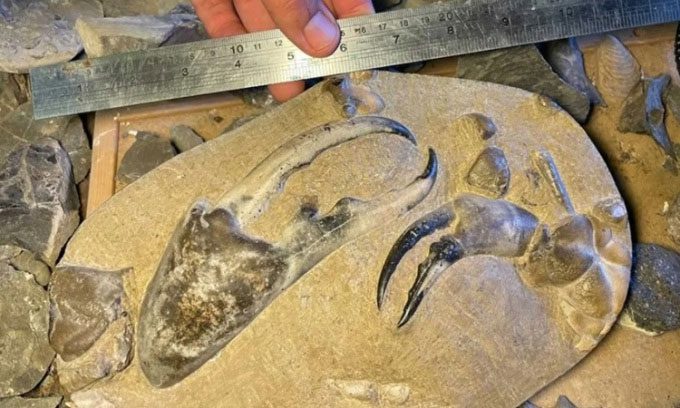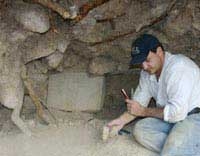Paleontologists have unearthed a gigantic ancient crab on a beach in New Zealand, featuring the largest fossilized claw ever discovered.

Fossil claw of Pseudocarcinus karlraubenheimeri. (Photo: Barry W.M. van Bakel).
The newly identified species, known as the Southern Giant Crab, has the scientific name Pseudocarcinus karlraubenheimeri. The specimen was found on Waitoetoe Beach on New Zealand’s North Island, approximately 240 km from Auckland, in sediment layers dating back 8.8 million years to the early Miocene epoch (5.3 – 23 million years ago). This relatively intact crab was buried in sediment from a long-ago volcanic eruption from the Mohakatino volcanic center offshore. This volcanic area was active between 8 to 14 million years ago.
P. karlraubenheimeri was described in a paper published on February 27 in the New Zealand Journal of Geology and Geophysics. The specimen is believed to have lived at depths of 200 – 600 meters in ancient seas.
Crabs are ten-legged crustaceans, with their two front legs forming claws. Many crab species exhibit sexual dimorphism, having one claw larger than the other. The extinct crab from New Zealand possesses the largest claw ever found in fossilized crabs, measuring approximately 15 cm long. The research team, led by Barry W. M. van Bakel from Utrecht University, suggests this adaptation reflects their predatory nature.
Among both living and extinct crab species, the Tasmanian Giant Crab (Pseudocarcinus gigas) has the largest claws, with males reaching lengths of up to 47 cm. This crustacean is distributed throughout the waters of Tasmania and can weigh up to 12 kg. P. karlraubenheimeri may be an ancestor of this massive living crab species. The conditions in New Zealand during the Miocene provided a favorable environment for P. karlraubenheimeri to grow to such large sizes. According to the research team, the warm and nutrient-rich environment, populated with clams, snails, and smaller crabs, created an abundant food source for these giant crabs.





















































